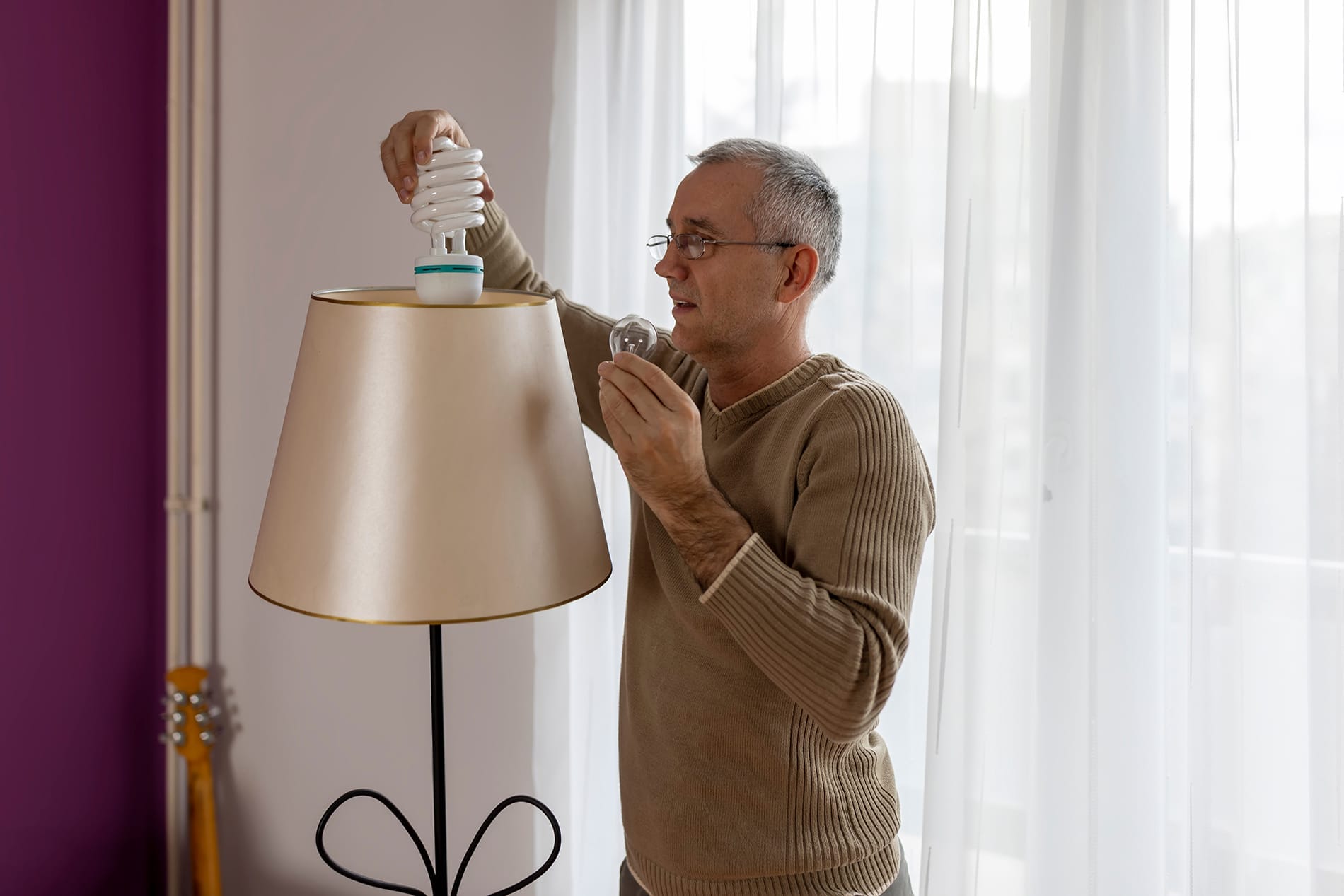Key Takeaways:
- Adjusting your thermostat can drastically reduce your energy consumption and help you save up to 10% on your annual utility bills.
- You can reduce energy consumption in the shower by taking shorter showers and installing special shower heads.
- Boost your energy conservation efforts by sharing your experience and savings with friends, family, and neighbors, inspiring them to do the same.
In life, whether it’s diet, exercise, or spending, small changes can make a big difference. Energy consumption is no different. By making simple lifestyle adjustments and leveraging energy-efficient appliances and practices, you can reduce your carbon footprint for a more sustainable future.
So, how do you get started? Let’s explore some simple and impactful ways to integrate energy conservation in daily habits.
What Are Some Simple Ways to Boost Energy Conservation in Daily Habits?
First things first. Energy conservation is the process of conserving energy through habits and actions. Meanwhile, energy efficiency typically refers to using technology to reduce energy usage. While they have slight differences, both conservation and efficiency have the same goal of using less energy.
Energy conservation in daily habits can be as simple as turning off lights and unplugging electronic devices when they aren’t in use. Meanwhile, energy efficiency measures can involve weatherstripping windows and doors or installing solar panels.
Below are eight quick and easy energy-saving tips to integrate into your daily life to help you reduce your energy usage and carbon footprint.
Bonus: Many of these tips can also lower your energy costs and will help you use renewable energy to combat climate change.
1. Optimize Heating and Cooling Systems
Optimizing heating and air conditioning systems can significantly impact your energy conservation efforts while maintaining indoor comfort. Here’s how.
Start by setting your thermostat to 78 degrees Fahrenheit in the summer and 68 degrees in the winter. This will keep your home comfortable while helping to lower energy bills and conserve energy.
Changing your base thermostat settings isn’t all, though. Instead of just leaving it on these settings all day every day, remember to change it when you’re not at home or sleeping. When you leave for work or go to sleep, turn your thermostat up by 7 to 10 degrees in the summer and lower it by the same amount in the winter. If you do this eight hours daily, this can help save on heating and cooling costs.
If changing the temperature daily is too much effort, consider installing or having a professional install a programmable or smart thermostat. Then, you can simply program it to automatically change the temperature based on your schedule.
Another thing to try in the summer is to combine the higher thermostat setting with a ceiling fan. This way, if the 78-degree setting is too high, the ceiling fan can help keep you cool without too much energy usage or turning on the air conditioner.
Pro Tip: If you have the time or extra money to hire someone, you can further enhance your HVAC system’s efficiency by repairing leaky windows or door seals.
2. Unplug Electronic Devices When Not in Use
Did you know that electronics continue drawing power when plugged in, even if when turned off? That’s right. That phone charger you leave plugged in all day saps a lot of energy even with no phone plugged into it. Other electronics, such as gaming devices, are even bigger offenders.
These are known as energy vampires, and like Count Dracula, they drain power from the grid, albeit slowly, and increase your energy consumption. Unplugging them can save a considerable amount of energy and help lower your energy bills. While the amount of energy saved may seem small per device, the National Renewable Energy Laboratory (NREL), a division of the Department of Energy, states these appliances could cost you up to $200 per year in unnecessary energy expenses. Moreover, unplugging idle devices reduces the risk of shortages and fires.
Pro Tip: You can use power strips to turn off and cut off multiple items from power with one button. If you’re thinking about just using a smart plug to turn off these devices, think again. A smart plug also saps about 0.3 to 0.4 watts to remain connected to Wi-Fi or run its timer.
3. Switch to Energy-Efficient Lighting
Energy-efficient lighting, such as light-emitting diode (LED) or compact fluorescent lamp (CFL) bulbs, consumes 75% less energy than traditional incandescent bulbs. They are so efficient because they convert more energy into light than into heat. By replacing outdated incandescent bulbs with energy-efficient alternatives, you can lower your energy consumption (and electricity bills) without compromising lighting.
Besides using less energy, LED and CFL bulbs have longer lifespans than incandescent lights, which means fewer replacements are needed. The typical incandescent bulb lasts 1,200 hours, whereas CFL and LED bulbs last up to 8,000 and 25,000 hours, respectively. This not only saves money but also reduces waste.
LED light bulbs have the added benefit of coming in various shapes, sizes, and colors. This allows for creative and customized lighting solutions. Some even have multi-color functionality, so you can swap the light color as you please via a mobile app or remote control.
Pro Tip: You can further reduce lighting expenses by turning off the lights and opening the curtains, allowing natural light to fill your spaces.
Enter your ZIP Code and compare electricity rates
4. Use Public Transit or Carpool
When we think of energy use, we often think of our home’s electricity. However, the fossil fuel your vehicle burns to drive also counts as energy use and greatly contributes to your carbon footprint. Fortunately, you can reduce your use in this area, too.
One simple way to minimize driving is to use public transportation whenever possible. Using buses, trains, or trams spreads the energy used to get from point A to point B among all the passengers aboard at that time, lowering overall energy consumption.
If public transit isn’t an option, you can also try carpooling. By sharing rides with others, such as coworkers, classmates, and neighbors, you can reduce the number of vehicles on the road and spread the energy consumption and emissions on that trip among everyone in the car. Plus, carpooling promotes social interactions and reduces traffic congestion.
If you’re the active type or looking to get more active, walking and cycling are highly energy-efficient modes of transportation. These alternatives not only save energy but also contribute to better personal health and well-being.
Pro Tip: If you’re considering buying an electric vehicle (EV) as a cure-all for energy conservation, keep in mind that you’ll still consume energy charging the car. Unless you have a dedicated solar EV charger or get power from another renewable energy source, there’s also a good chance the energy charging your EV will come from fossil fuels.
5. Focus on Sustainable Clothing and Personal Habits
Your clothing choices and personal habits are important for your energy conservation efforts. Being mindful of the materials and production processes involved in the clothes we buy can support sustainable fashion practices.
Choosing clothes made from organic or recycled materials reduces conventional textile production’s energy and water consumption. When possible, avoid cheaply made “fast fashion” clothing and opt for timeless designs made from natural fabrics like sustainable cotton, linen, and bamboo. This ensures your clothes never go out of style and remain in great shape for many years.
Personal habits, such as washing clothes in cold water in the washing machine and hang-drying instead of using a dryer, can significantly reduce energy consumption. You can also limit ironing and avoid unnecessary dry cleaning to enhance energy conservation in your daily life.
6. Save Power While You Shower
Showering with piping hot water can be an invigorating experience, helping you wake up in the morning or relax after a hard day’s work. However, getting too comfortable in the shower can also increase energy usage. A great rule of thumb is to reduce your showering time to just four minutes. To help you remember, put a kitchen timer in the bathroom or set a timer on your cell phone.
Just cutting your shower from eight to four minutes can save a whopping $200 per year on your electricity bills, not to mention reducing the need for heating water.
Pro Tip: Enhance your savings in the shower by installing a WaterSense-certified shower head. These low-flow, high-pressure shower heads can save enough energy to power a 60-watt lightbulb for seven hours every time you shower.
7. Use the Dishwasher
It’s easy to assume that washing dishes by hand is more energy efficient, but that’s not always the case. If your dishwasher is Energy Star certified, you can reduce energy consumption by using it instead of your hands.
After finishing up a meal, put the dirty dishes in the dishwasher. Once you have a full load, start the dishwasher, but make sure to activate the hot water boosting mode if it has one. This mode can fall under various names, such as “Heavy Duty” or “Super Hot Wash.” Check your dishwasher’s manual to find out which setting to use to activate this feature.
What this mode does is increase the water temperature to 140 degrees to ensure the most efficient cleaning without drawing hot water from your home’s water heater.
Pro Tip: Try shorter dishwasher cycles for even more savings. Find the perfect mode that gets your dishes clean and dry while operating for the shortest amount of time.
8. Promote Energy Conservation Practices
It’s great to implement energy conservation in daily habits, but it’s even better when many people are participating. You can help fuel this collective responsibility by promoting your energy-saving habits.
Don’t be shy when talking about your energy-saving efforts. Speak freely about them and explain to people within your family, workspace, and community how your energy conservation practices help your wallet and the planet. By setting an example through your own energy-saving habits, you can help inspire others to adopt similar practices.
Share what you’ve learned about energy conservation techniques and empower your friends, family, and neighbors to make informed choices. Then you and all those around you can work together toward a common goal and continue inspiring others to take action.
Energy Conservation in Daily Habits Can Shrink Utility Bills and Your Carbon Footprint
Integrating energy conservation in daily habits, such as adjusting your thermostat, unplugging idle devices, and avoiding fast fashion can go a long way in conserving energy and reducing your carbon footprint. Plus, you can promote your new practices among friends, family, and colleagues to inspire them to do the same.
With these tips, you’ll have a great energy-saving base to build upon as you find new and innovative ways to cut consumption even further.
Brought to you by energysavings.com
All images licensed from Adobe Stock.





